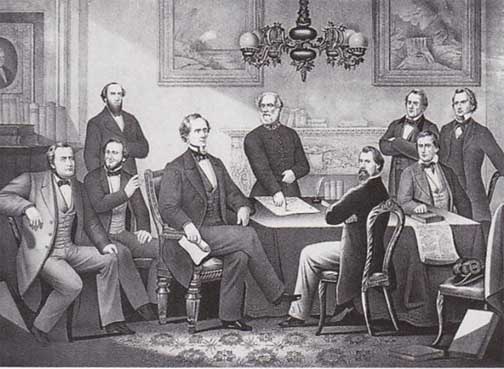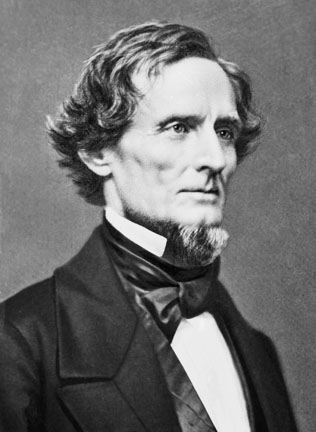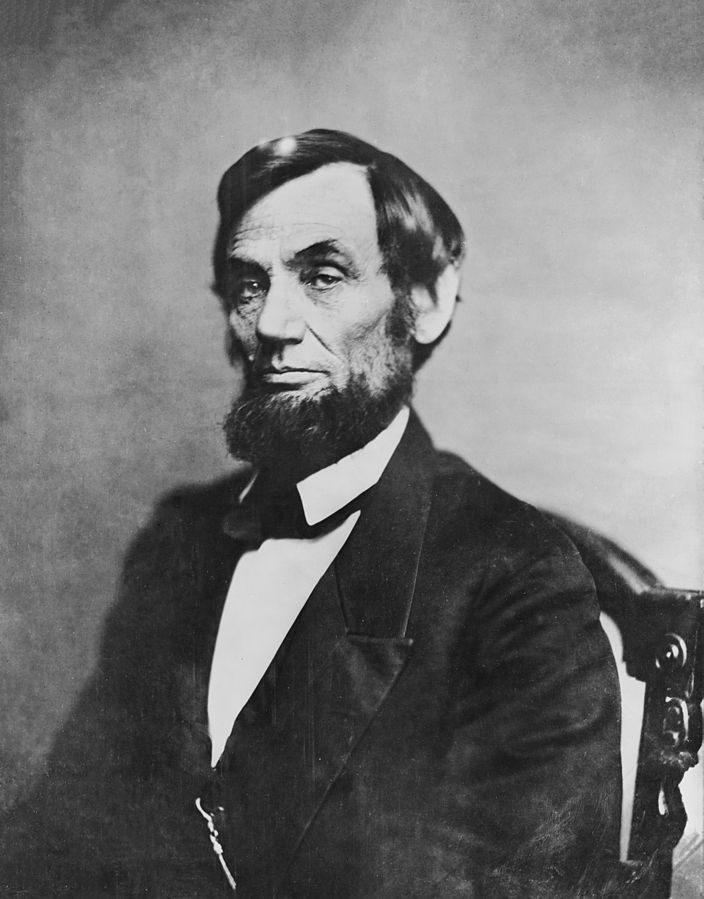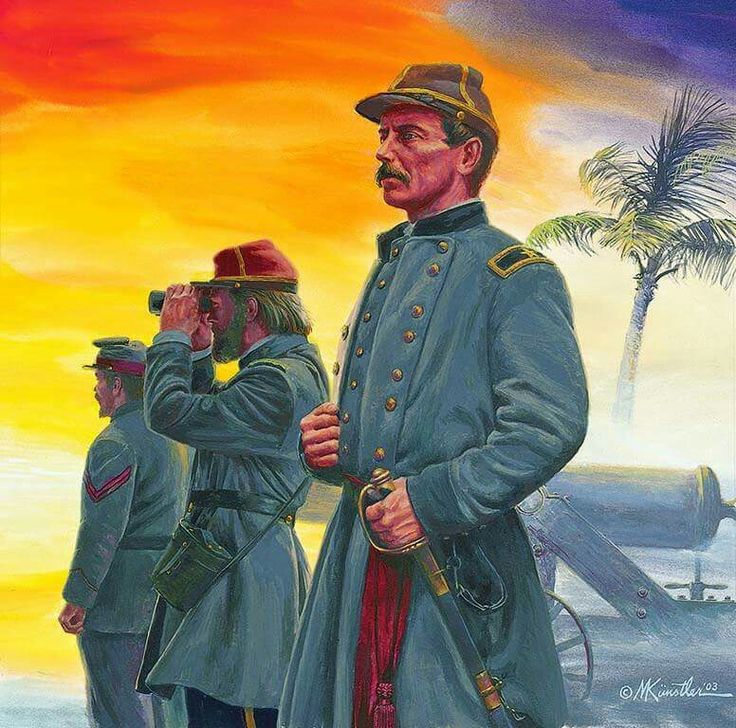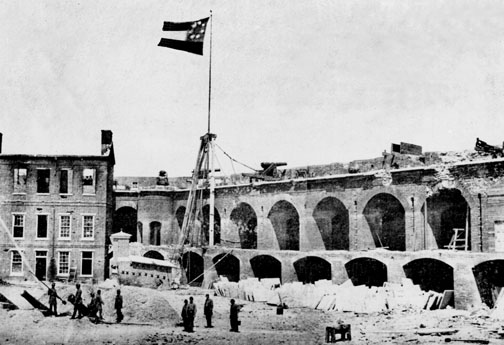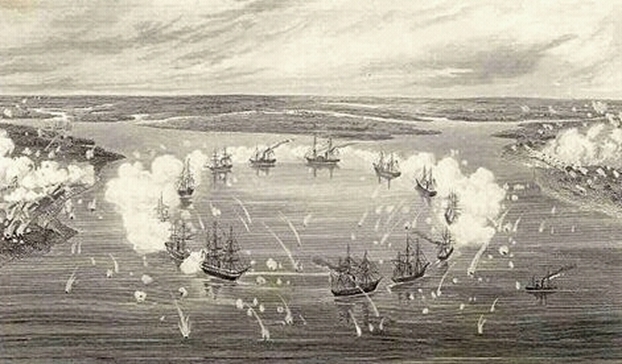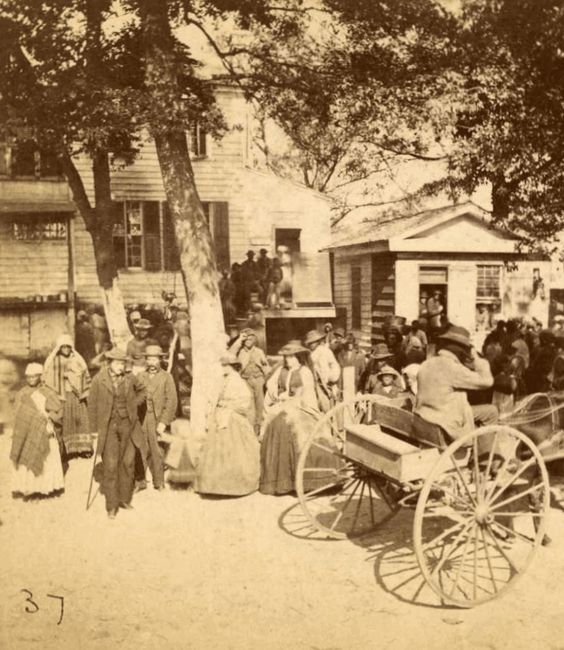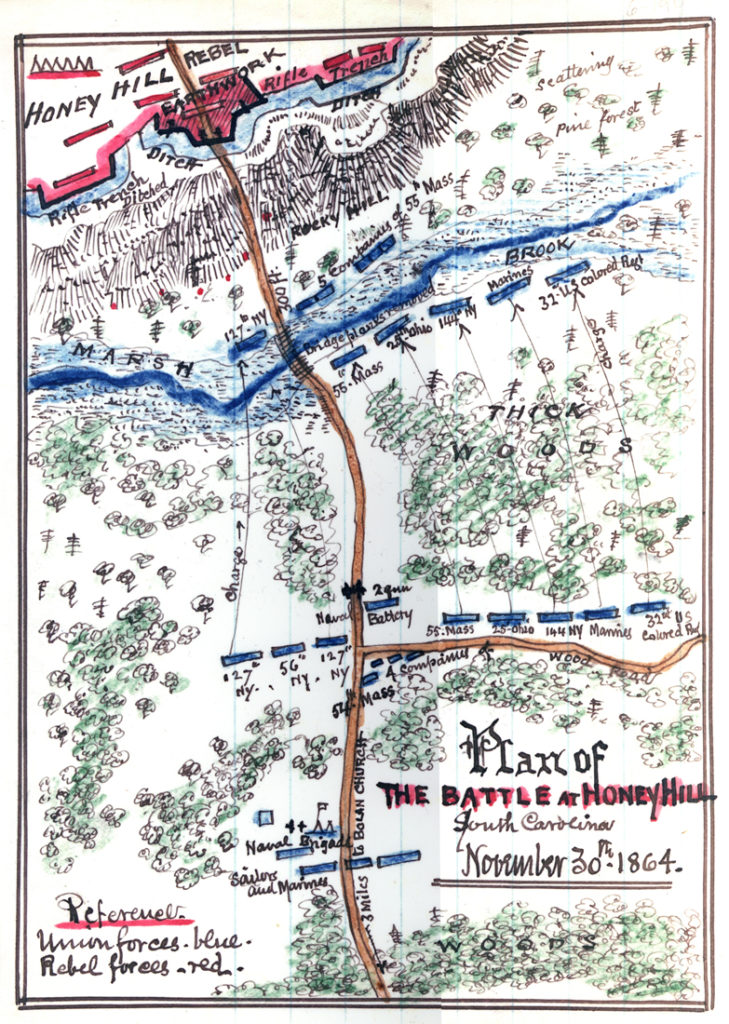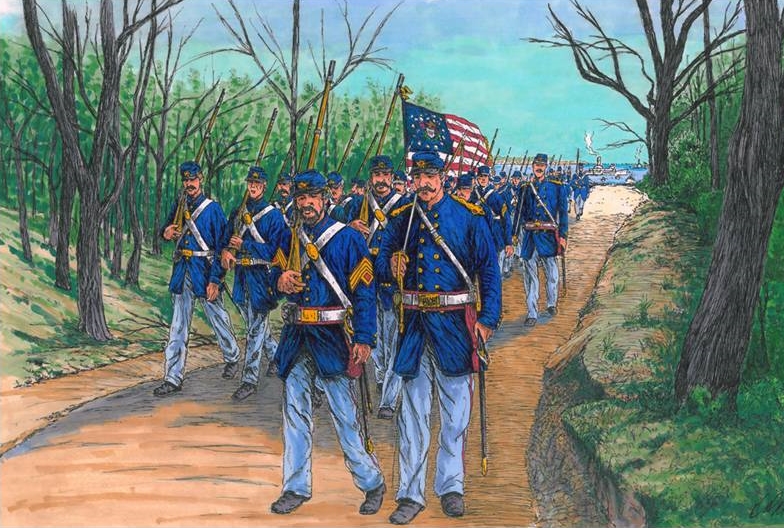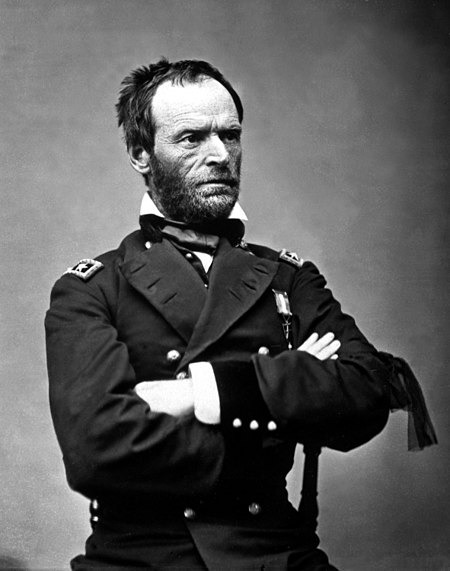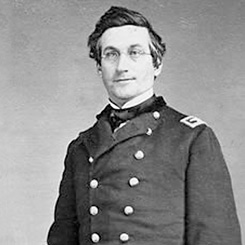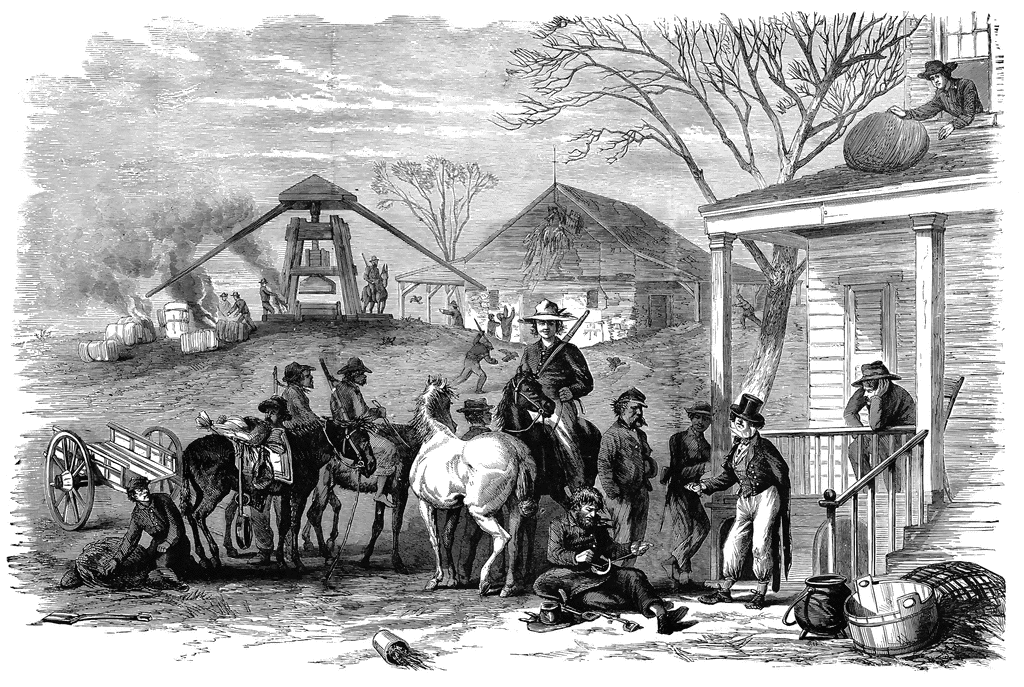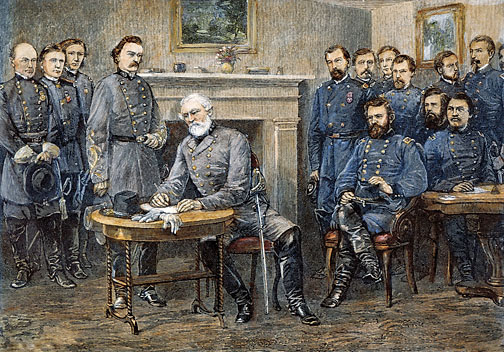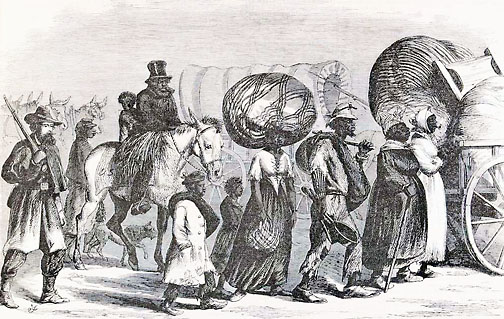THE CONFEDERACY IS FORMED
In February 1861, representatives from South Carolina, Mississippi, Florida, Alabama, Georgia, and Louisiana met in Montgomery, Alabama to formally establish a unified government which was named the Confederate States of America. On February 9, Jefferson Davis of Mississippi was elected the Confederacy’s first president. By the time Abraham Lincoln was inaugurated in March 1861, Texas had joined the Confederacy.
The Battle of Fort Sumter (April 12–13, 1861)
The Confederacy, in an attempt to consolidate their authority, demanded that Union forces surrender occupied military installations. At the time, the Union only controlled Fort Sumter in South Carolina, Fort Pickens off the Florida coast, and a number of minor outposts scattered throughout the South. The United States (the Union) rejected secession considering the Confederacy illegal. Lincoln was reluctant to be depicted as a warmonger yet refused to submit to Confederate demands. On April 12, 1861, the American Civil War began when Confederate shore batteries under General P.G.T. Beauregard, opened fire on Fort Sumter in South Carolina’s Charleston Bay. Within two months President Lincoln called for volunteers to march south and suppress the rebellion. This pushed the four other southern states (Virginia, North Carolina, Tennessee, and Arkansas) to secede. The Confederacy later accepted two additional states as members (Missouri and Kentucky) although neither officially declared secession nor were ever controlled by Confederate forces.
No foreign state officially recognized the Confederacy as an independent country, but Britain and France granted the Confederate States of America belligerent status.
THE NORTH GAINS A FOOTHOLD IN THE LOWCOUNTRY
The Battle of Port Royal took place on November 7, 1861 in which a United States Navy fleet and United States Army expeditionary force captured Fort Wallace (Walker) on Hilton Head and Fort Beauregard on Phillip's Island.
Fearful of Northern invasion forces, Beaufort residents deserted the city leaving it in tact on November 9th, allowing Northern troops to enter without opposition and thus claim it as the first southern city to be captured by Federal forces.
Beaufort became the chief base of operations of the South Atlantic blockading squadron and headquarters of the Union Army's Department of the South and remained in Northern hands throughout the war. Federal forces were able to consolidate their control of the Sea Islands surrounding Beaufort as well coastal islands in Georgia, reaching northward towards Charleston.
The Port Royal attack played a major role in the war strategy of General Robert E. Lee who observed that the Southern forces were too widely scattered and that coastal positions could not be strengthened enough to defeat Union naval forces. Accordingly, he concentrated the South’s coastal guns at Charleston and Savannah. He further made use of interior lines of communication, and developed quick-reaction forces that could move along the coastal railroads to prevent a Union breakthrough. The Savannah to Charleston railroad that traversed present day Jasper County was the obvious target of future actions.
BATTLE OF HONEY HILL
The Battle of Honey Hill was the third battle of Sherman’s March to the Sea. It was fought on November 30, 1864. It was a failed Union Army expedition under Gen. John P. Hatch that attempted to cut off the Charleston and Savannah Railroad in support of Sherman’s projected arrival in Savannah. The Savannah to Charleston railroad was the line of supply and communication for the two objectives of Sherman’s campaign. Sherman wanted to break the 102-mile long railroad to interrupt supplies and reinforcements that could reach the enemy on his front and to prevent the escape of Confederate General William J. Hardee’s 10,000 man force defending Savannah. Leaving Hilton Head on November 28, the union forces steamed up the Broad River in transports to cut the rail lines near Pocotaligo. Hatch disembarked at Boyd's Landing and marched inland. On November 30, Hatch encountered a Confederate force of regulars and militia under Col. Charles J. Colcock at Honey Hill.
The battle involved some 5,000 Union troops and 1,400 Confederate troops ending in a Confederate victory. Estimated casualties totaled 796 with union forces sustaining 746 and confederate forces 50.
PATH OF DESTRUCTION
Houses, crops, railroads, plantations, irreplaceable public records, private libraries, scientific publications and great works of art were completely destroyed, a loss that would impact South Carolina’s recovery for decades.
Commanding officers turned a blind eye to worst offenders called “bummers” who were sent to forage for food and supplies but often resorted to committing acts of arson, plundering and murder in advance of the main army advancing.
After capturing Savannah Georgia, General William Tecumseh Sherman was ordered to reinforce General Grant’s army in Virginia. Sherman was able to persuade Grant that a march north through the Carolinas would be more effective in undermining Southern morale.
Sherman crossed the Savannah river in to South Carolina on January 15, 1865, joining his other brigades as they pushed northward. The goal was to obliterate everything of military value, the reality was that his army left a path of total destruction 100 miles wide, extending the entire length of the state as they made their way northward.
BURNING GILLISONVILLE
Diary of Norris Crossman serving under Col. Charles H. Van Wyck of the Fifty-sixth New York Volunteer Infantry stationed near Coosawhatchie, South Carolina
“Nearly every house on our line of march has been destroyed”
Jan. 17, 1865--Coosawatchie, S.C. Went out with a foraging party to Colonel Colcock’s plantation on the Grahamville Road. Got considerable bacon, poultry, etc. and destroyed by fire some cotton, with cotton gins and other buildings.
Jan. 18, 1865--Col. Van Wyck took about 200 men and went to Gillisonville with a detachmnet of men this fornoon. He captured three Rebels and a few horses and some stores. Sherman’s advance guard consisting of two squadrons of cavalry arrived today. They had no opposition while coming up from Savannah.
Jan. 19, 1865--Col. Van Wyck took about 200 man an went to Gillisonville. Maj. Smith and I went ahead and found the town quiet. The Cavalry came up at 10 a.m. We secured provisions, furniture, etc. The Court House and jail were burned, also the hotel, a store and two or three deserted dwellings. We returned to camp at 4 p.m. in a rain storm.
Citation: South Carolina Civilians in Sherman's Path by Karen Stokes
DETERMINATION AND DEFIANCE
Union forces held strategic positions in the coastal regions of the Lowcountry while Confederate forces maintained their control of inland regions primarily due to their ability to freely communicate, quickly assemble troops and supplies and to deploy resources as needed via rail.
Both sides would probe opposing defenses with hit and run raiding parties. Guerrilla tactics including sniping by Confederate troops at Union ships patrolling local waterways, were met with return fire that often included of volley’s cannon rounds.
The Battle of Tulifinny
In December of 1864, the Governor of South Carolina ordered the Battalion of State Cadets from the Citadel and Arsenal to deploy to Tulifinny Creek near Yemassee, to reinforce Confederate troops defending a key railroad bridge. Outnumbered by 5-1, the Confederate forces successfully defended their positions. This action is of historic importance because it involved the deployment of the entire Battalion of State Cadets from the Citadel and Arsenal Academies and it was also one of the rare occasions when United States Marines fought in combat during the Civil War.
OTHER ACTIONS IN THE LOWCOUNTRY
The Battle of Pocotaglio
Oct, 22, 1862
The Burning of Bluffton
June 4, 1863
The Battle of Tulifinny
Dec. 6-9, 1864
THE WAR ENDS
The Battle of Appomattox Court House, fought on the morning of April 9, 1865, was one of the last battles of the American Civil War.
Robert E. Lee arrived in Appomattox County Virginia on April 8th intent on resupplying his troops with provisions located at railroad at Appomattox Station. Brig. Gen. George A. Custer reached the objective first, capturing then burning three supply trains. Lee hoped for more supplies further west and refused written requests by General Grant to surrender his army.
On the morning of April 9th, Confederate forces attacked the Union Army. Unable to link up with with reinforcements. Lee’s army was trapped and recognizing the futility of further engagements Lee agreed to meet Grant at the Wilmer McLean home at Appomattox Courthouse that afternoon. where the surrender of the Army of Northern Virginia was signed. Three days later, a formal ceremony marked the disbanding of Lee's army and the parole of his men, ending the war in Virginia. The events here triggered similar surrenders across the south, ending the fighting of the Civil War.

